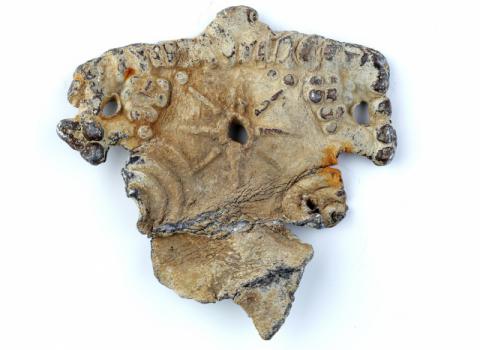Star of Ancient Sozopol 'Possibly Served as Model for Macedonia's Coat of Arms'

Archaeological excavations in the Bulgarian seaside town of Sozopol on Sunday revealed an interesting find - a leaden bucranium with an eight-ray star, which possibly served as model for the coat of arms of Macedonia.
This was announced by the Director of the National Historical Museum (NIM) Bozhidar Dimitrov in a press release on Monday.
Bucrania are a special type of amulet in the shape of an ox skull, which emerged in the ancient Greek world (and from there passed to the Thracians) in V century B.C.
The amulet-bucranium from Apollonia Pontica as Sozopol was known back at the time can be dated back exactly to this era.
What distinguishes the newly found amulet in Sozopol is a solar symbol in the shape of an eight-ray star, which is placed on the forehead of the ox.
The star from Sozopol is suspiciously similar to the star, which is featured on the coat of arms and the flag of Macedonia.
Skopje claims that the star was a symbol of the ancient Macedonian state and was created and used for the first time by Philip II of Macedon in the second half of the IV century B.C and it was uncovered at his tomb in Vergina in northern Greece.
As matter of fact, the star from Vergina had more rays, but under Greek pressure, Macedonia limited them to eight.
The municipality of Sozopol, which is the successor of Apollonia Pontica, could protest as the star of Sozopol is a century older than the one of Philip II, which was apparently stolen by the ruler during his stay at Apollonia Pontica.
According to ancient historians, Philip II maintained very good relations with Apollonia and the city mediated in his negotiations with the Scythian King Ateas.
Dimitrov calls on the municipality of Sozopol to sue Macedonia over the...
- Log in to post comments



